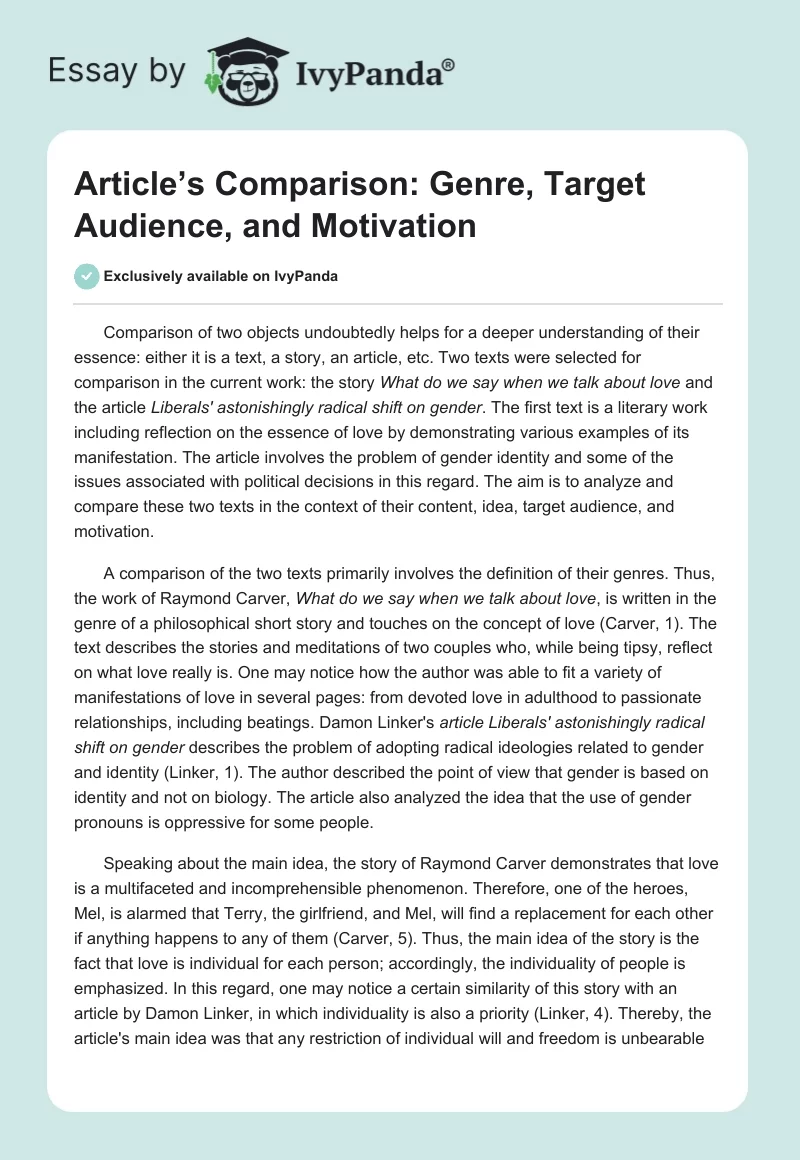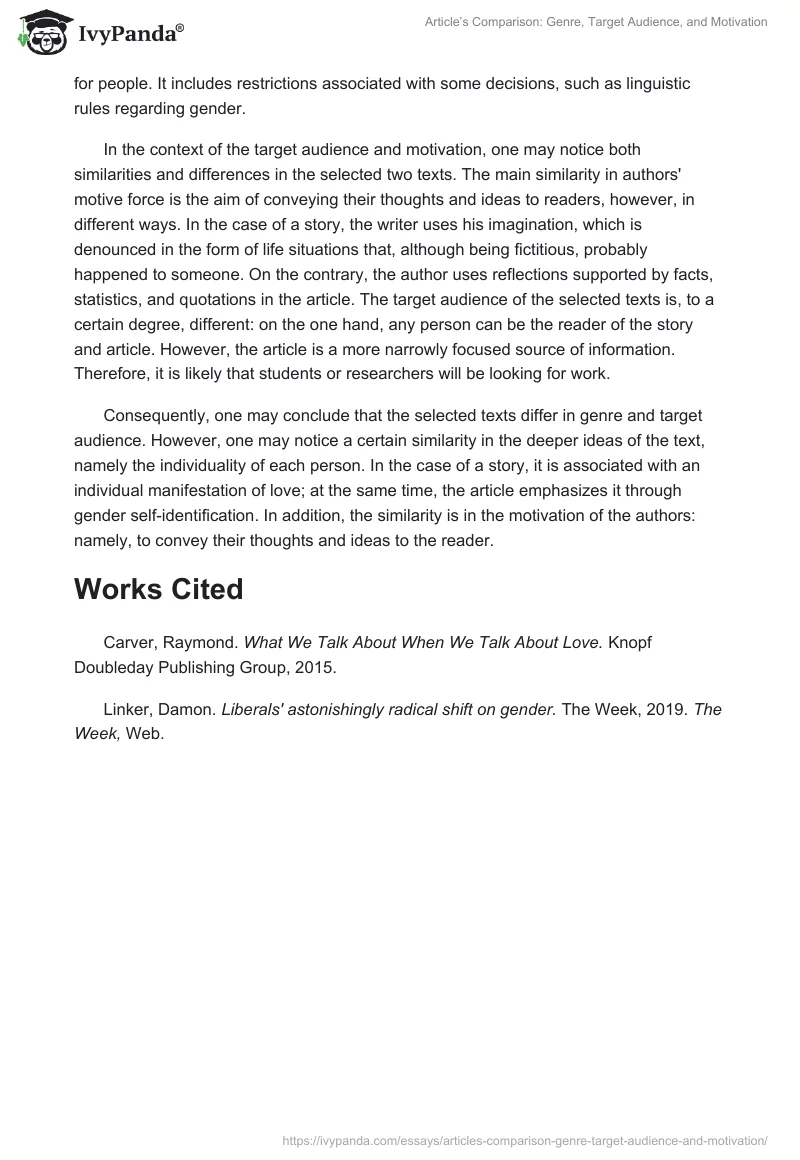Comparison of two objects undoubtedly helps for a deeper understanding of their essence: either it is a text, a story, an article, etc. Two texts were selected for comparison in the current work: the story What do we say when we talk about love and the article Liberals’ astonishingly radical shift on gender. The first text is a literary work including reflection on the essence of love by demonstrating various examples of its manifestation. The article involves the problem of gender identity and some of the issues associated with political decisions in this regard. The aim is to analyze and compare these two texts in the context of their content, idea, target audience, and motivation.
A comparison of the two texts primarily involves the definition of their genres. Thus, the work of Raymond Carver, What do we say when we talk about love, is written in the genre of a philosophical short story and touches on the concept of love (Carver, 1). The text describes the stories and meditations of two couples who, while being tipsy, reflect on what love really is. One may notice how the author was able to fit a variety of manifestations of love in several pages: from devoted love in adulthood to passionate relationships, including beatings. Damon Linker’s article Liberals’ astonishingly radical shift on gender describes the problem of adopting radical ideologies related to gender and identity (Linker, 1). The author described the point of view that gender is based on identity and not on biology. The article also analyzed the idea that the use of gender pronouns is oppressive for some people.
Speaking about the main idea, the story of Raymond Carver demonstrates that love is a multifaceted and incomprehensible phenomenon. Therefore, one of the heroes, Mel, is alarmed that Terry, the girlfriend, and Mel, will find a replacement for each other if anything happens to any of them (Carver, 5). Thus, the main idea of the story is the fact that love is individual for each person; accordingly, the individuality of people is emphasized. In this regard, one may notice a certain similarity of this story with an article by Damon Linker, in which individuality is also a priority (Linker, 4). Thereby, the article’s main idea was that any restriction of individual will and freedom is unbearable for people. It includes restrictions associated with some decisions, such as linguistic rules regarding gender.
In the context of the target audience and motivation, one may notice both similarities and differences in the selected two texts. The main similarity in authors’ motive force is the aim of conveying their thoughts and ideas to readers, however, in different ways. In the case of a story, the writer uses his imagination, which is denounced in the form of life situations that, although being fictitious, probably happened to someone. On the contrary, the author uses reflections supported by facts, statistics, and quotations in the article. The target audience of the selected texts is, to a certain degree, different: on the one hand, any person can be the reader of the story and article. However, the article is a more narrowly focused source of information. Therefore, it is likely that students or researchers will be looking for work.
Consequently, one may conclude that the selected texts differ in genre and target audience. However, one may notice a certain similarity in the deeper ideas of the text, namely the individuality of each person. In the case of a story, it is associated with an individual manifestation of love; at the same time, the article emphasizes it through gender self-identification. In addition, the similarity is in the motivation of the authors: namely, to convey their thoughts and ideas to the reader.
Works Cited
Carver, Raymond. What We Talk About When We Talk About Love. Knopf Doubleday Publishing Group, 2015.
Linker, Damon. Liberals’ astonishingly radical shift on gender. The Week, 2019. The Week, Web.


